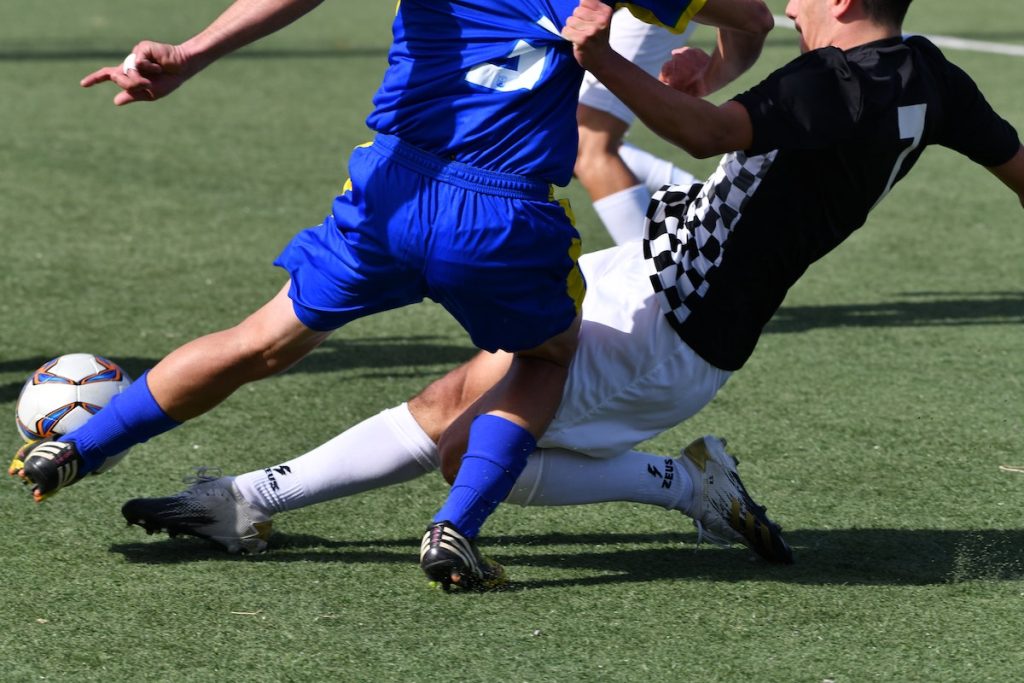• Acute trauma is an immediate onset of pain from a single incident due to contact with another athlete or object or uncoordinated movement.
• Chronic trauma is caused by repeated small impacts on a specific body part, often resulting in tennis elbow or runner’s knee.
• Overtraining Syndrome is a type of chronic fatigue caused by excessive training without proper rest periods and can lead to physical exhaustion or psychological distress.
• Treating sports injuries involves rest, icing the affected area, taking over-the-counter medications if necessary, and seeking medical attention if warranted.
Sport is an essential part of many people’s lives. Playing sports is an effective way to stay fit, build self-confidence and learn essential life lessons such as teamwork, perseverance, and leadership. Furthermore, playing sports also allows people to have fun and socialize with others. However, sports are fairly common in this kind of hobby. Here’s what you need to know about it.
Types of Sports Trauma
Sports trauma is a physical injury or psychological distress caused by participation in a sport. It can range from mild to severe, and understanding the different types of sports trauma is essential to identifying, preventing, and treating it. Here’s a dive into the four types of sports trauma to better understand how they affect athletes.
Acute Trauma
Acute trauma occurs when there is an immediate onset of pain from a single incident. This trauma includes sprains, strains, contusions, fractures, lacerations, and dislocations.
Acute trauma can be caused by contact with another athlete or object or by an uncoordinated movement, such as falling after losing balance or tripping over something on the field.
For example, a football player who has been tackled too hard may experience acute trauma due to the sudden impact. To prevent this type of sports-related injury, athletes should practice proper technique when playing their sport and use protective gear such as helmets and mouthguards when necessary.
A more overlooked form of acute trauma is tooth loss due to contact with a hard object or another athlete. It happens all the time, and thankfully, some teeth can be saved and replaced with a robust tooth replacement. These replacements are made of solid and durable materials and can last many years.

Chronic Trauma
Chronic trauma develops over time due to repeated small impacts on a specific body part. This sports-related injury occurs gradually and often goes unnoticed until it becomes more severe. Common chronic traumas include tennis elbow and runner’s knee, both caused by repetitive motions that strain the tendons in those areas over time.
To prevent chronic traumas, athletes need to warm up properly before engaging in any physical activity so that their muscles are ready for use and they do not overexert themselves while participating in their sport.
Additionally, athletes should make sure they are using proper technique and adequate rest periods between workouts and games so that their bodies have enough time to recover before being subjected to more stress or strain.
Overtraining Syndrome (OTS)
Overtraining Syndrome (OTS) is a type of chronic fatigue caused by excessive training without proper rest periods, which can lead to physical exhaustion and psychological distress such as depression or anxiety. OTS is usually seen in athletes trying to achieve peak performance but may also occur if an athlete has not been adequately trained for their sport or does not know how much rest their body needs between workouts or games.
To prevent OTS from occurring, athletes should ensure that they are getting enough rest between workouts/games and monitor their mental health for any signs of burnout or emotional fatigue, which could indicate that they need more rest than usual before engaging in further physical activity.
Additionally, coaches should be aware of OTS symptoms to intervene if necessary and help athletes get back on track with their training regime before it leads to further injuries or damage down the line.

Treating Sports Injuries
The most important thing to remember when dealing with any type of sports injury is that rest is essential for recovery.
Rest
Depending on the severity of the injury, rest may involve taking a break from physical activity or using crutches and other assistive devices while healing occurs.
Icing
Additionally, icing the affected area can reduce swelling and inflammation; heat therapy may help with muscle spasms associated with chronic pain conditions.
Medications
Over-the-counter medications like ibuprofen and acetaminophen can also help manage pain during recovery.
Professional Help
It is also important to note that some sports injuries require professional medical attention—particularly those involving broken bones or severe head trauma—so it is best to seek medical advice immediately if necessary. Your doctor will be able to advise you on the best course of treatment for your specific injury and provide guidance on how soon you will be able to return to playing your sport safely.
Sports trauma is an unfortunate but unavoidable part of being a competitive athlete. Understanding the different types of sports trauma and how to prevent them is essential for athletes so they can minimize their risk of injury and perform at their peak performance. Treating sports injuries promptly and properly will also ensure a speedy recovery and reduce the chances of further damage in the future.

